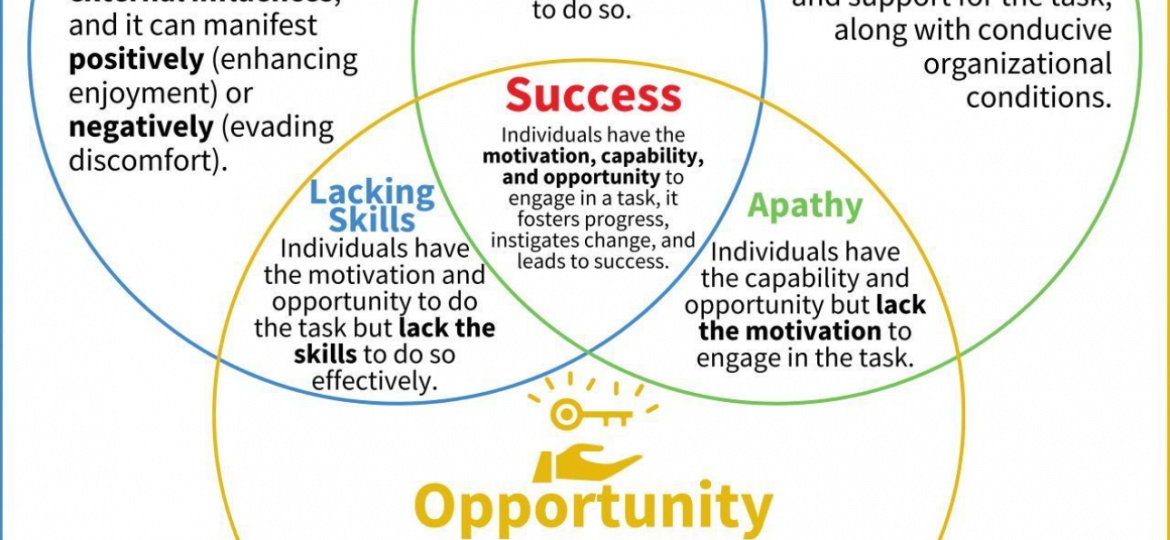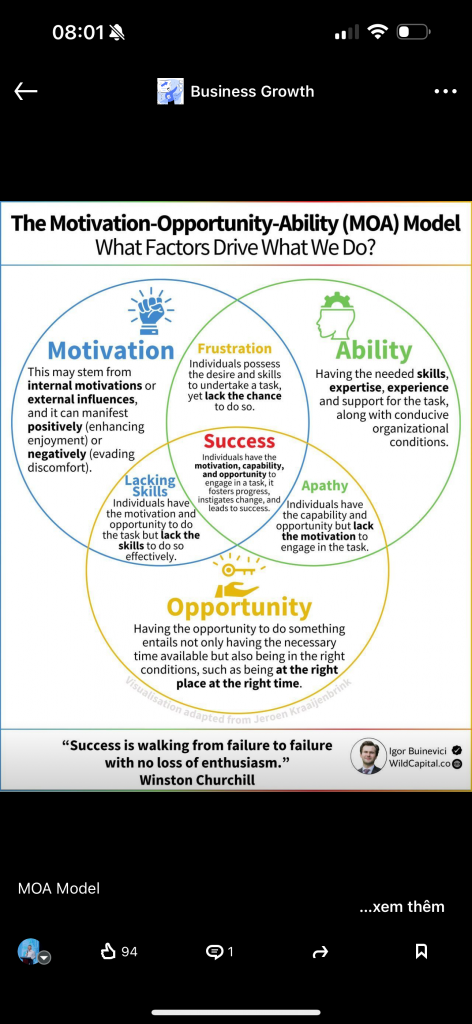
MOA Model
Credits to Igor Buinevici, follow him for more valuable content.
——
Here’s the original post:
Have you ever come across the MOA Model?

If not, it offers valuable insights into why we take action.
Understanding it is essential, as it not only intrigues but also enables us to take targeted actions and accomplish our objectives.
The MOA Model, which stands for Motivation, Opportunity, and Ability, is one of the simplest frameworks for comprehending human behavior.
It provides a general explanation of what drives human actions and can be applied to various types of actions.
Here is what each component means:
Motivation:
The initial prerequisite for action is the motivation to undertake it. This motivation may arise from internal factors or external influences and can manifest positively [enhancing enjoyment] or negatively [avoiding discomfort].
Opportunity:
Motivation alone isn’t sufficient to explain actions – there must also be an opportunity to act. This involves not only having the necessary time available but also being in the appropriate conditions, such as being in the right place at the right time.
Ability:
The third and final element is ability, which refers to possessing the required skills, expertise, experience, and support for the task, as well as conducive organizational conditions.
While there are various applications and versions of this model, the core principle remains consistent: all three components are necessary.
If any component is lacking:
A] Without motivation, you encounter apathy – people may have the opportunity and ability to act but lack the drive to do so, resulting in no progress.
B] Without opportunity, you face frustration – individuals may possess the motivation and ability to act but lack the chance to do so, leading to stagnation.
C] Without ability, you confront a skills gap – people may be motivated and have the opportunity to act, but lack the necessary skills, hindering progress.
The MOA Model finds application in various organizational contexts, including:
➟ Strategy execution: Ensuring that all three components are in place.
➟ Change management: Verifying readiness for change.
➟ Stagnation analysis: Identifying bottlenecks and barriers to progress.
Think about your recent initiatives:
Were Motivation, Opportunity and Ability all in place?
Adapted from Jeroen Kraaijenbrink
——-

